Highlight

Successful together – our valantic Team.
Meet the people who bring passion and accountability to driving success at valantic.
Get to know usFrom the initial inspiration to the successful implementation.
Our holistic data science consulting offers professional support in the development and implementation of your strategy: from the identification of relevant use cases to the productive implementation of machine learning models and artificial intelligence.

Right now, many companies see the use of data science only in a scientific context. However, data science projects are indispensable for all companies in order to secure clear competitive advantages on an innovative market and use data effectively. Companies can optimize business processes, increase the quality of their products and services, and reduce costs and increase customer satisfaction by using data science to detect patterns and for forecasting. The benefits are obvious, yet many companies are lacking a suitable entry point for making a successful start with data science projects.
Since often there is no clear guideline for making such projects tangible, data science is frequently not yet used in operational practice. That’s why our data science consultants are prepared to help you develop and implement your data science strategy: from identifying relevant use cases to selecting suitable tools to the productive implementation of machine learning (ML) models and use of artificial intelligence (AI).
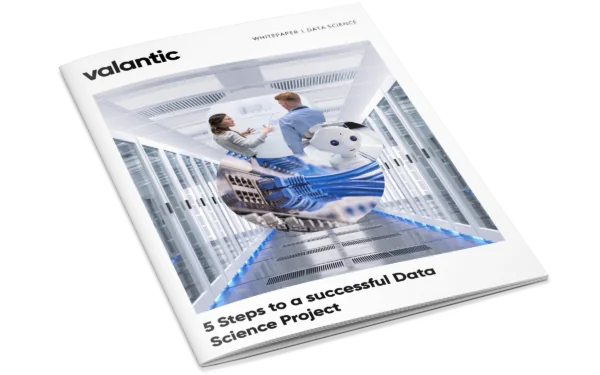
5 Steps to a successful Data Science Project
This white paper shows how you can identify use cases in a few steps and transfer them to your own company: From initial hurdles to practical examples.

Data science consulting for companies
What is data science? Data science describes the extraction of knowledge from structured, semi-structured, and unstructured data (Big Data) to optimize products, services, and processes within a company. Machine learning models are created to gain insights from data. Data science is the key for companies that want to use predictive and prescriptive analytics.
The goals of these analyses are, among others:
Together with customers, valantic develops individual use cases that we accompany all the way, from design to implementation. With data science projects, companies can reduce costs, improve the quality of their products and services, and therefore increase their profits for the long term.
In addition to its data science expertise, valantic has completed numerous successful business intelligence (BI) and data warehouse (DWH) projects. Many companies have already profited from valantic’s extensive consulting experience.
Comprehensive advising on the development of your data science strategy
Our data science experts are prepared to help you identify relevant use cases, select suitable tools, and implement machine learning (ML) models and artificial intelligence (AI) in your productive environment.
Data science project experience
Through many successful business intelligence and data warehouse projects, valantic has acquired deep knowledge. It is therefore the ideal partner for data science projects since data provision and preparation form the basis for successful data science analyses.
Agile project management
valantic uses agile procedural models such as scrum and Kanban. Our data science projects are implemented using short iteration cycles and feedback loops in order to minimize risks and errors in the development process. This increases transparency and the speed of change, which makes data science projects more cost-effective for our customers.
Vendor-agnostic
Our long-term data science partnerships enable us to access many platforms and tools that we use for companies’ benefit. There is a custom-tailored solution and advising for every data science project. Profit from our partnerships with IBM, SAP, Cognigy, Microsoft, AWS, UI Path, and Tableau. The use of open-source platforms and tools also allows us to create flexible, individualized data science solutions for each of our customers.

Use cases – what application possibilities are there?
Every successful data science project is based at its core on a suitable use case. The goal of every data science use case is to generate added value from the available data. That’s why every use case should be attuned individually to the company. Through workshops and trainings, valantic helps companies identify data science use cases, prioritize, and implement them. The following use cases are already in use at many companies:
Time Series Forecasting
For a company’s strategic control and planning, reliable prediction of future sales and other KPIs is crucial. Data is analyzed over time to achieve this. In addition to classic statistical models such as the ARIMA model, in the meantime complex deep learning models (neuronal networks) are being used more frequently. The prediction of KPIs has enormous potential for companies since the insights gained can serve as sound bases for decision-making.
Fraud Detection
Many companies suffer from fraudulent activities, some of which increase costs immensely. During fraud detection, transactions are examined in order to develop a model that detects patterns that are very likely to result in fraud. This model is applied to new data and real-time data in order to detect and prevent fraudulent transactions. Preventable costs can be avoided this way.
Customer Segmentation
Today, it’s ever more important for companies to understand and address customers’ individual needs. With customer segmentation, relevant customer groups are identified and divided into sensible segments. With knowledge about the similarities and differences between these customer groups, companies can develop targeted marketing and CRM strategies. Segmentation also offers a good basis for conducting additional data science analyses, such as churn management and sentiment analyses.
Churn Management
With the churn of customers, companies lose sources of income and potential for upselling, cross-selling, and further recommendation. With a churn management analysis, the customer churn can be determined based on the customer’s past data. In addition, customer churn serves as an indicator for addressing customers who are threatening to leave. This can prevent regular customers from jumping to a competitor and increase customer satisfaction.
Recommendation Systems
A recommendation system should suggest to users the most relevant items for them from a large quantity of objects (documents, pictures, videos, or products). By recording user behavior, relevant suggestions are made by a machine learning algorithm. Recommendation systems can assist a company’s customers and employees. By recommending suitable products, the customer experience is improved for the long term in an online shop, for example. Furthermore, a recommendation system can help employees with their daily work and produce slimmed-down processes and lower costs by finding relevant documents more quickly.
E-mail and text analysis (Natural Language Processing)
Every day, companies generate immense quantities of text documents. In the process, things get lost easily. Furthermore, incorrect entries in unstructured text data frequently go unnoticed. By using text analytics and NLP, companies can examine text documents efficiently, analyze e-mails and other customer communication, fill out forms automatically, and find relevant information in large quantities of data. Thanks to technology, costs are reduced, and employees can focus on their core tasks.
Sentiment Analysis
Sentiment analysis is a method from natural language processing (NLP). The analysis is used to determine whether customers have a positive or negative attitude toward a particular company’s products or services. With sentiment analysis, companies understand their customers better and they can react quickly and with purpose to customer requests or criticism. The results of the sentiment analysis can be displayed on dashboards and made available to the relevant departments. Sentiment analysis supports decision-making based on customer insights.
Supply chain management and production
The increasing digitalization of production and supply chains is already generating huge quantities of data. Thanks to the intelligent linking and enrichment of the data with data science methods, there are many use cases that generate true added value with respect to transparency, optimization, and automation. With connected plant, we work with our customers to implement high-quality data products in the supply chain management and production sectors.
Learn more about appropriate use cases in the production and supply chain sectors.
Finance organisation
Thanks to the digitalization of processes, companies have huge amounts of data on their customers, markets and products at their disposal. A well thought-out digital strategy is required to transform these data volumes into meaningful insights and competitive advantages for companies and to fully exploit the potential of big data. Using statistical methods and machine learning models, we work with you to create the basis for well-founded business decisions and faster processes in finance controlling. We have already been able to present a large number of use cases and implement them several times.
Of course the use of data science extends far beyond these use cases. Other possible use cases are, for example: Predictive maintenance & quality assurance in production.


valantic Academy develop the future together
Welcome to the valantic Training Center!
Each year, our trainers welcome about 200 participants to our training center in Hamburg or on-site at customers. In addition to a multitude of trainings, workshops, and coaching sessions about IBM, Microsoft, Informatica, MicroStrategy, SAP, and Anaplan topics, our valantic Training Center helps people establish knowledge about a technology and move toward certification, with individualized or standardized training. Our motto is “don’t just migrate your systems, migrate your users too!” – the valantic Training Center strives to be the perfect complement to your current project, a freshening-up about new highlights and functions of various technologies or an intensification of existing knowledge.
The key to a successful data science project is the effective cooperation of the entire team. Over time, therefore, various procedural models have been developed, which serve as guidelines and offer helpful structure. Companies that orient themselves according to procedural models can better plan data science projects and thus minimize project risks. As an experienced partner, valantic helps its customer with project planning and uses the following models:
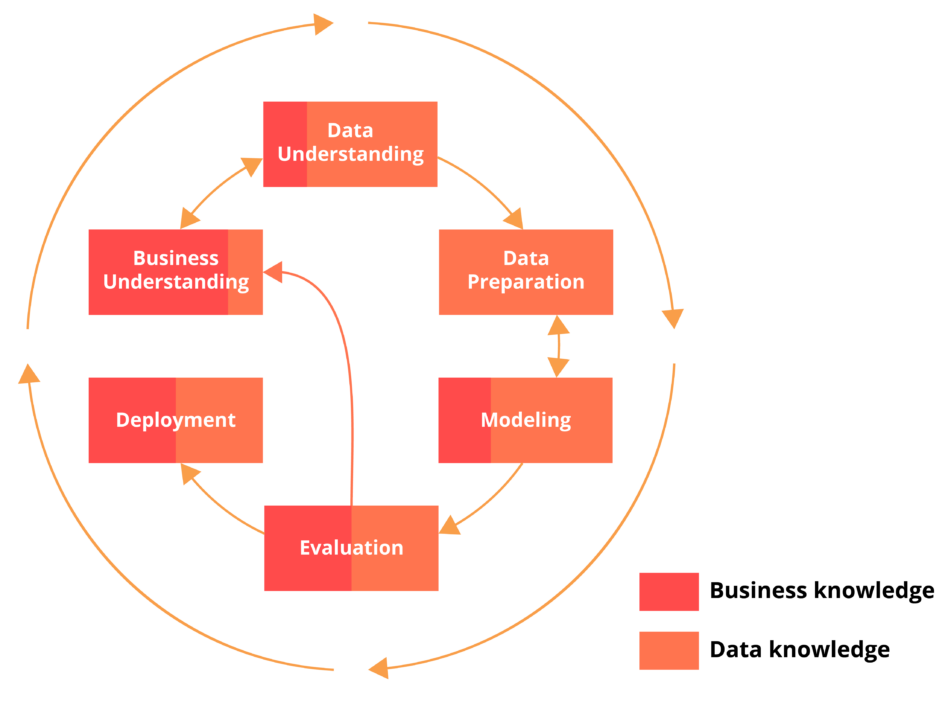
CRISP-DM
Probably the best-known model for data science projects is the Cross Industry Standard Process for Data Mining (CRISP DM). This model divides a project into six phases: Domain understanding, data understanding, data preparation, modeling, evaluation, and deployment. First the content question is examined and then the available data is collected and sized up. The data is prepared so that machine learning models can be created. Finally, these machine learning models are evaluated and provided. In practice, this is done either in the form of reports or in the form of programs, which continuously process and analyze new data.
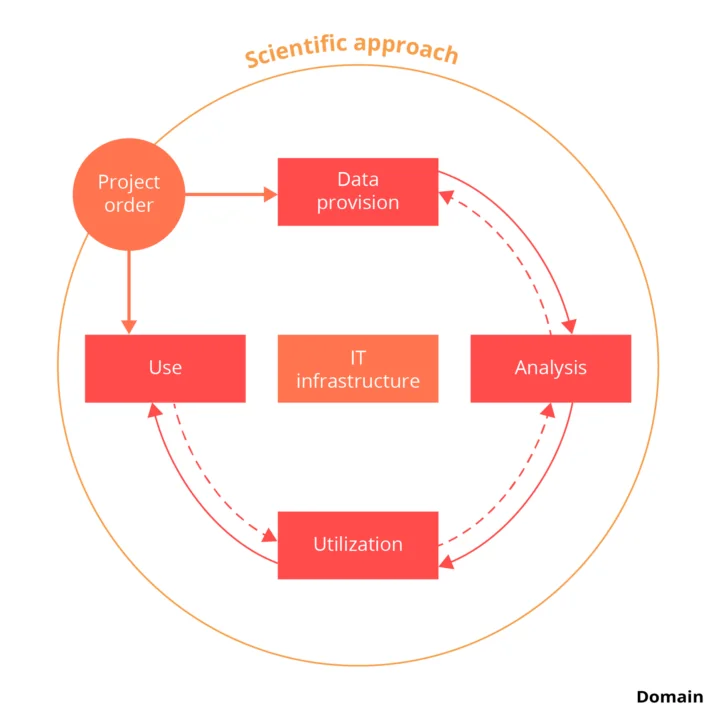
DASC-PM
In 2019, a group of people from various universities and companies formulated a new model, the Data Science Process Model (or DASC-PM for short). It divides a project into key areas that form the basis for project planning. These areas include the project order, data provision, analysis, practical application, and subsequent use. Furthermore, special attention is paid to the IT infrastructure and the scientific process. Considerations about the domain and content area of the project are incorporated into every area. For each key area, expertise and role profiles can be created, which serve as the basis for the ideal assignment of a data science team. The DASC-PM is enhanced continuously and expanded to include insights from a wide variety of industries and topics.
Data Engineering
Companies frequently underestimate the relevance of data engineering for data science projects. However, data provision and preparation play a decisive role for every data science use case that will be deployed productively at a company. Data engineers focus on data collection, cleansing, preparation, and validation. Data engineering guarantees high data quality and quick data availability. Both are basic requirements for validated and sensible analyses and solutions.
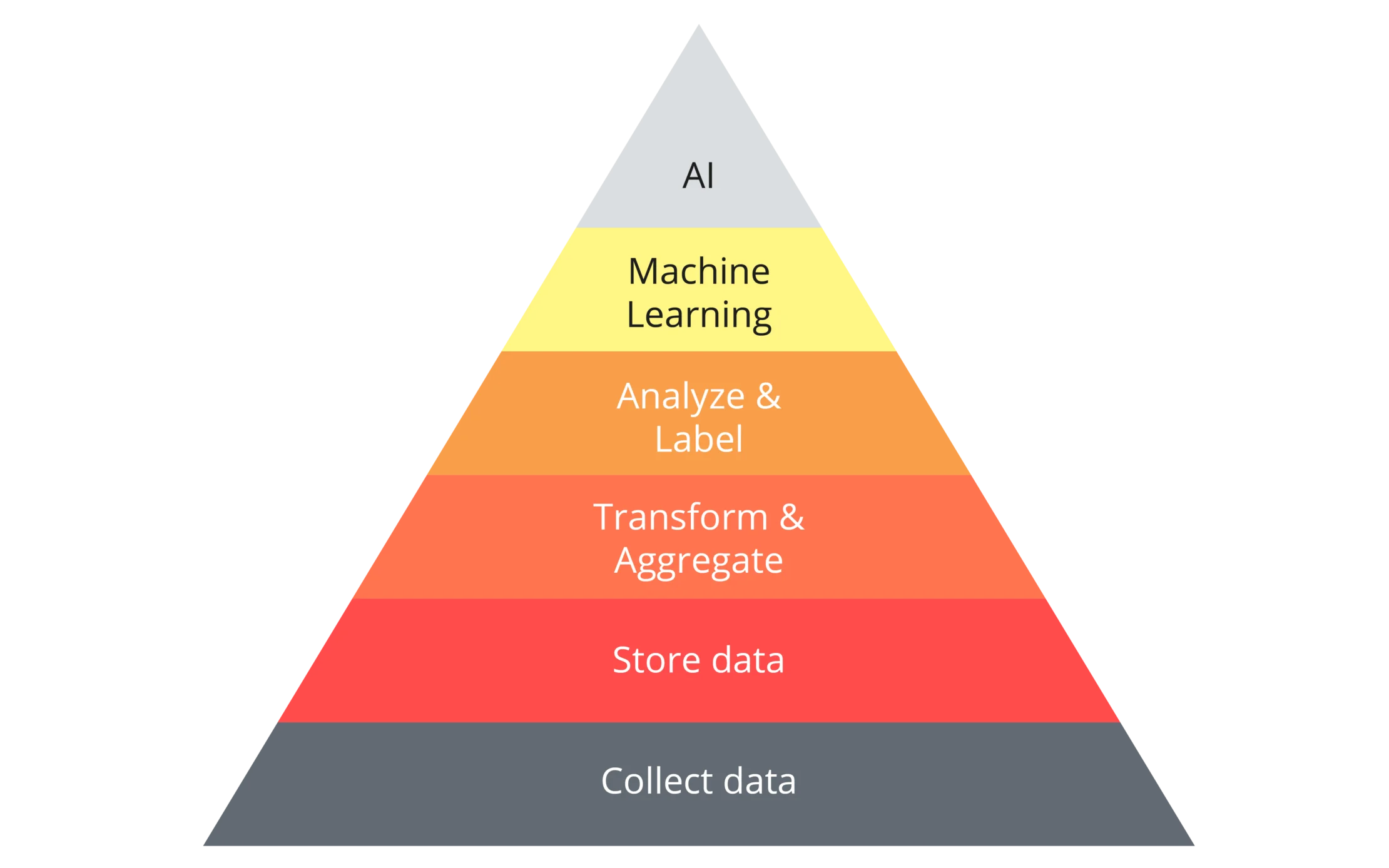
State-of-the-art data platform
A state-of-the-art data platform is a collection of tools and technologies that enables the company to become a data-driven organization. Frequently cloud solutions are indispensable for this path since they make the IT infrastructure scalable and elastic and enable quick implementation of use cases and the quick growth of companies.
The pillars of a state-of-the-art data platform are the data warehouse and the data lake. They serve as central repositories of structured and unstructured data (Big Data) and prepare the raw data via data transformation for business intelligence and data science applications. The data migration is the point where the construction of a data platform begins. Here, data from many different data sources is loaded into the data warehouse or data lake. The data transformation enables the cleansing and combination of the data. Tools in the data catalog and governance sector enable the addition of metadata and formulation of governance functions for creating, classifying, and managing a catalog for data stocks.
Given the increasing number of tools, the big challenge is to manage data protection controls and access control across the entire stack (access governance). Today’s business intelligence and analytics tools offer users dashboards and self-service reports. Companies that go beyond business intelligence and focus on predictive analyses and machine learning use special data science tools for this.
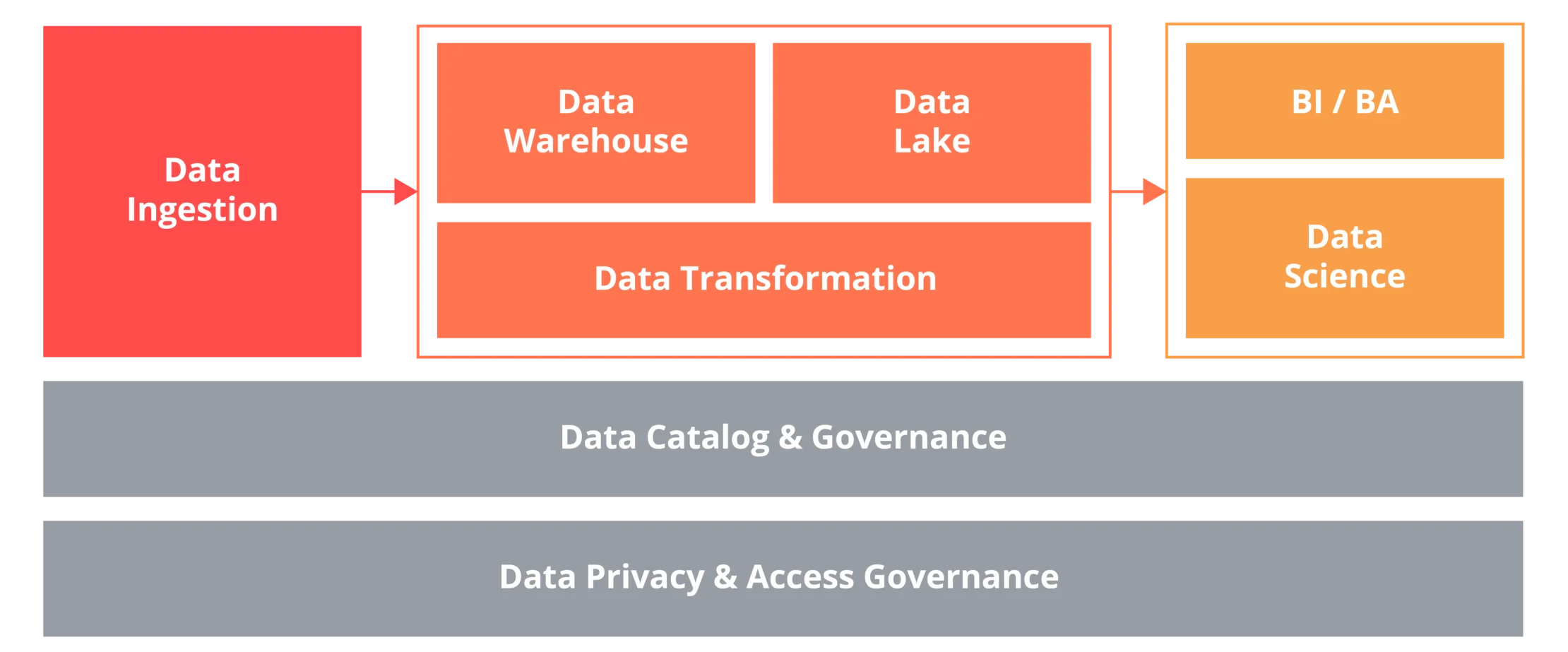
There are many technologies that have to be integrated sensibly into the company’s data platform. Great expertise and project experience in data engineering and governance are required for this. The data platforms that valantic implements with its customers distinguish themselves through custom-tailored tool selection, agile data management, and a flexible, quick process model for data provision and preparation.
Types of machine learning
Machine learning describes the application of learning algorithms with the aim of making predictions or discovering unknown patterns and laws in data. Unlike classical algorithms, these learning algorithms are not programmed, but are trained and continuously improved with data. This allows machine learning algorithms to be used flexibly in a variety of application areas. Depending on the use case, different machine learning models can be set up and used. Machine learning is divided into three types: supervised learning, unsupervised learning, and enforcement learning.
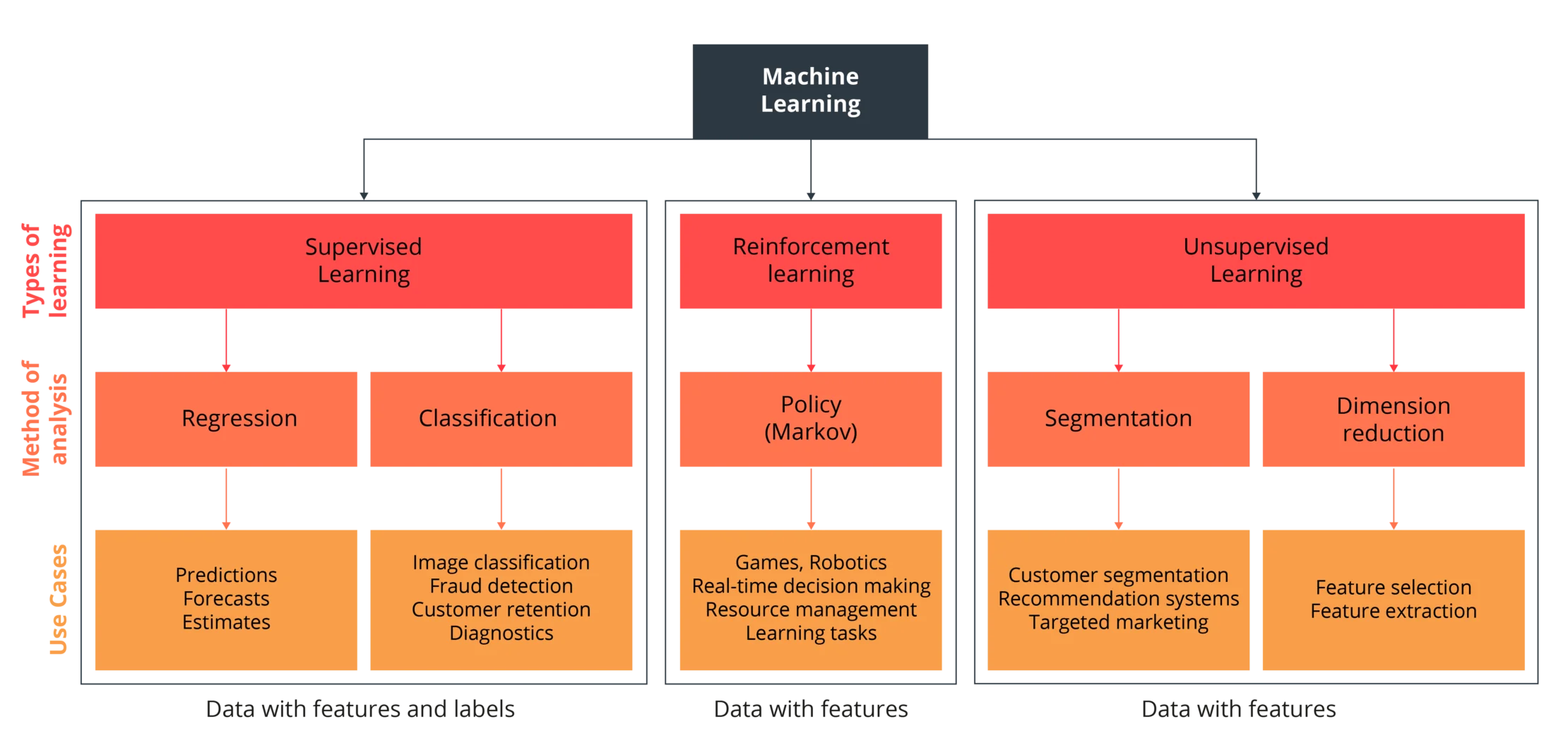
Supervised learning
In supervised learning, the data stock consists of a collection of previously tagged data. The data consists of features and labels. The goal of a monitored learning algorithm is to use the data to develop a model that receives a feature or a set of features and can predict the labels for new data records. Monitored learning is used in prediction and prognosis (regression), fraud detection (classification), risk assessment of investments, and calculation of the probability of failure of machines (predictive maintenance).
Unsupervised learning
In unsupervised learning, the algorithm uses a data stock that consists solely of features. In contrast to supervised learning, the data has no labels and therefore there are no target variables. The goal of unsupervised learning is to identify hidden patterns and similarities in the data. These patterns and similarities can be used to group data (segmentation) and to reduce the complexity of a data set (dimension reduction). By using these methods, data can be visualized better and interpreted more easily by users. In addition, the results of the algorithms can be used as features for further data science analyses. Classic use cases for unsupervised learning are customer segmentation, referral systems, and targeted marketing.
Reinforcement learning
In reinforcement learning, the machine (agent) is in a virtual or real environment. The agent can perform actions in this environment and is evaluated by a reward system and a cost function. In so doing, the agent learns a policy that maximizes its benefit. The machine therefore uses feedback from interaction with its environment to optimize future actions and prevent errors. Unlike supervised and unsupervised learning, the algorithm does not require sample data, but only an environment and an assessment function to optimize its actions. Reinforcement learning is applied in those areas where decision-making is sequential. Classic applications include computer games, robotics, resource management, and logistics.
Deep learning
Deep learning is a subset of machine learning that uses artificial neural networks. Deep neural networks exist when the neural network has more than one intermediate layer. Neural networks are particularly suitable for complex applications and/or the field of unstructured data (Big Data). Deep learning is already being used in a variety of AI applications (for example in voice assistance, face recognition or autonomous driving), which leads to revolutionary and disruptive changes.
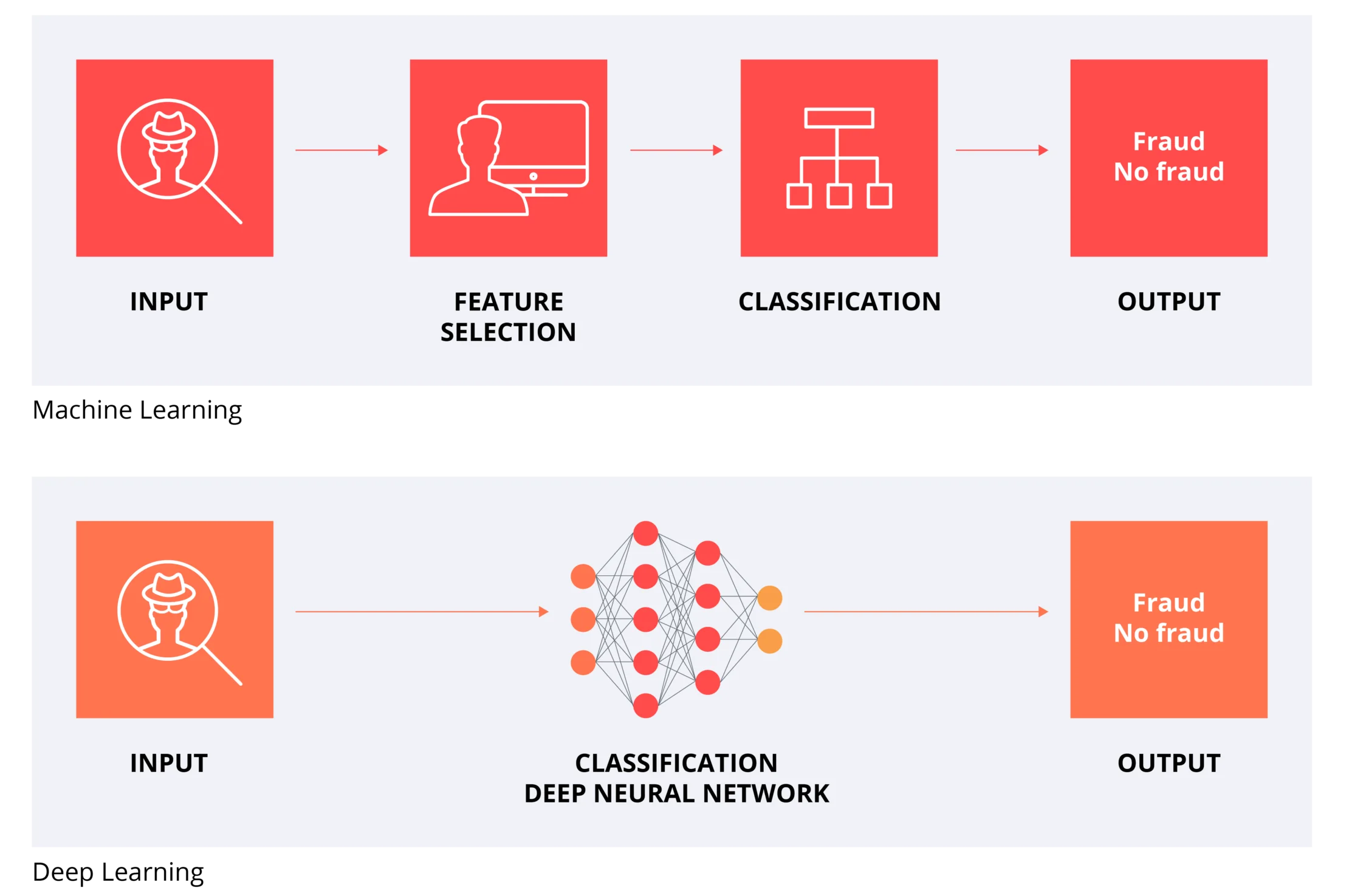
Machine learning in companies’ productive environments
There are some challenges when introducing a data science use case into a productive environment. The implementation of the machine learning models (ML code) represents only a fraction of the work effort involved in a successful data science project. While machine learning models are often based on open-source tools and tools, the classic IT architecture often works with proprietary software — for good reason. This situation requires a close meshing of ML code and IT operations (MLOps). Factors to be considered are not only the provision of the machine learning models, but also a continuous quality check. MLOps ensures effective use of the analysis results, ensuring consistent quality of the results.

Artificial intelligence (AI) is already a part of our daily lives. In the morning, our voice assistant wakes us up. On the way to work, due to the current traffic situation, a navigation device suggests a detour from the regular route. Throughout the day, the smartphone helps us compose messages and texts. In the evening, we rely on the recommendations of a virtual agent to find suitable films and TV series. AI accompanies us without our even noticing it.
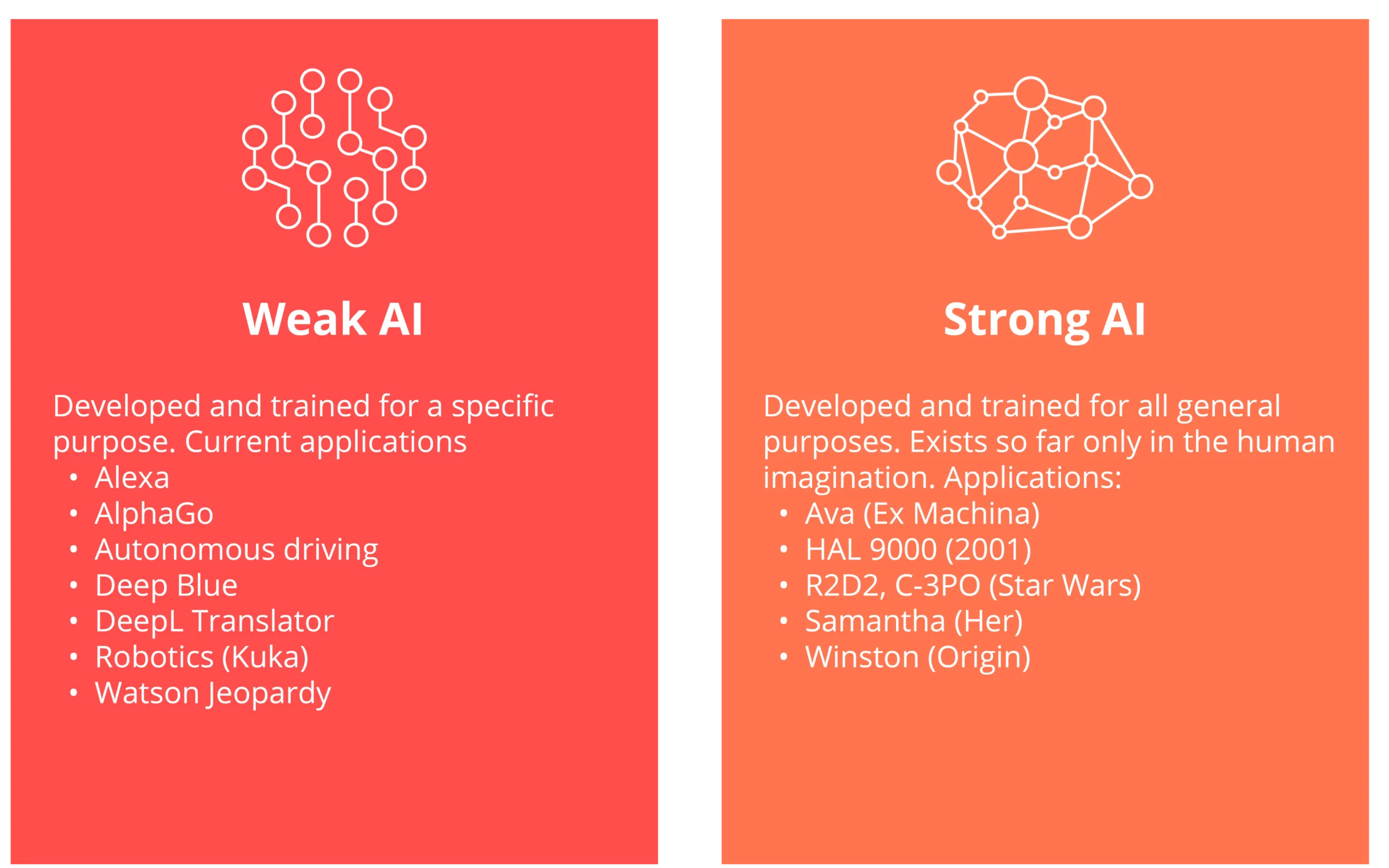
AI is about developing learning algorithms that mimic human behavior. There is a distinction between strong AI and weak AI. Strong AI refers to the development of a system that has the same intellectual abilities as a human being and is thus able to solve any kind of general problems. Weak AI describes a system that has been developed and trained with the help of data specifically for a particular use case. While strong AI is still a dream of the future, weak AI is already being used at many companies. The most common applications include:
When using artificial intelligence, it is important to think in the long term. Artificial intelligence can not only achieve cost savings and profits in the short term, but also enable completely new business models in the long term. In order to achieve this long-term and sustainable added value in the best possible way, AI projects should be embedded in a company-wide strategy. valantic assists companies with the strategic planning of AI projects, the design of AI applications, and the implementation of AI systems in productive operation. Read our service page to find out how you can use artificial intelligence profitably at your company.
A suitable data science platform should not only enable the construction and use of machine learning models, but also the preparation and visualization of the data. Meanwhile, vendors are competing to offer these capabilities. Cloud-based products (Software as a Service) in particular are experiencing rapid growth. In addition to classic software vendors such as IBM, Microsoft, SAP, and SAS, younger companies such as Databricks, Dataiku, and DataRobot are also trying to establish their innovative products on the market. While younger companies are relying on lean and easy-to-use data science platforms, large software vendors offer highly customizable solutions that are often required to address complex business needs.
Many of these cloud-based products are fast and easy to deploy, and they frequently offer a platform where data scientists, analysts, and business users can exchange ideas. With predefined processes, even specialist users can execute complex algorithms and interpret and share the results. With the help of AI functionalities, many tools can create company-specific analyses with the click of a mouse. The tools also strengthen the interpretation of the underlying data through their visualization capabilities. This, in turn, reduces initial costs and facilitates entry into more complex data science projects.
In addition to the established software providers and the younger companies, programming languages such as Python and R are a valid means of editing and visualizing data and creating and using a company’s own machine learning models. There are predefined open-source libraries for this purpose. Due to their flexibility, the programming languages Python and R are usually the first choice for data scientists. To bridge the gap between analysts, business users, and data scientists, these two programming languages are now integrated into data science platforms and tools. This enables better collaboration and thus increases the productivity of the entire team.

Through our partnerships with established software providers and the use of open-source libraries and tools, we are able to develop a solution that fits every customer. Work with valantic to benefit from our expertise and use the right data science tools and platforms.

Daniel Völker
Head of Data Science
valantic